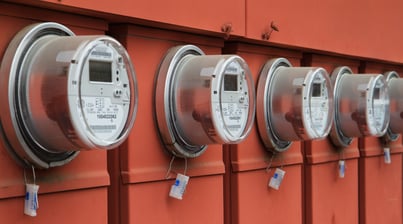If you are a building owner not yet using submetering technology, you are likely leaving money on the table. Why can that be said? Examining what submetering is and how evolving technology is making an impact on utility usage will help you analyze whether submetering is right for you.
What is Submetering?
Utility submetering allows building owners and facility managers to individually measure utility usage amongst tenants or monitor building systems such as HVAC, lighting, and refrigeration systems. Modern submeter systems wirelessly aquire and aggregate water, gas, and electric usage in real-time allowing a bird's-eye view of utility usage as it occurs.
Benefits of Submetering for Tenants
Because submetering provides an accurate measurement of the utility usage of a tenant, tenants who master conservation techniques will reap the benefit of lower utility bills. If you were to take a survey of your current tenants asking whether they would like to be responsible for their own utility usage or foot the bill for the usage habits of neighboring tenants as well, it is likely that your tenants would respond favorably to the implementation of a submetering system.
Being able to control their own utility usage and associated costs is an attractive option for many tenants who are looking to find cost-savings. Since lease rates and rental rates are often adjusted upward due to rising utility costs, tenants can reap benefits in terms of fewer rate hikes over the long-term.
Benefits for Building Owners
Buildings utilizing submetering technologies can cut utility costs by 20 to 35 percent annually. The U.S. Department of Energy estimates average savings at 21 percent nationwide, even if the Energy Star score remains the same.
So how does submetering save money if none of the building systems change? Simply put, when a tenant pays for what is consumed, that tenant becomes more frugal. Passing on the consequences, either good or bad, for tenant utility usage directly to the tenant encourages conservative behaviors. This alignment of tenant usage behaviors with appropriate incentives spurs a reduction in energy emissions, a more cost-effective way to maintain overall building comfort, and a reduction in peak demand usage for the entire building.
As a side note, smart buildings that use submetering technology attract more conservation-minded tenants, who often are in favor of paying a bit more in lease or rental fees in exchange for the ability to manage their own utility consumption.
Additionally, submetering provides a more comprehensive and detailed view of what is happening in your building allowing close monitoring of where and how your energy is being used. This enables you to spot anomalies quickly, saving both time and money as you identify, assess, and remedy problems that lead to excessive consumption.
Armed with real-time data, you can benchmark and analyze individual building systems and adjust your building's consumption profile over time. In this way, the initial expense of implementing a submetering system will likely pay for itself within a reasonable amount of time.
Taking Submetering Up a Notch
With cloud technology providing increasing access to your building's essential data, you can quickly respond to utility consumption issues, maintain a clear data record for benchmarking purposes, and correctly assess the projected ROI of retrofitting your building with more energy-efficient systems.


